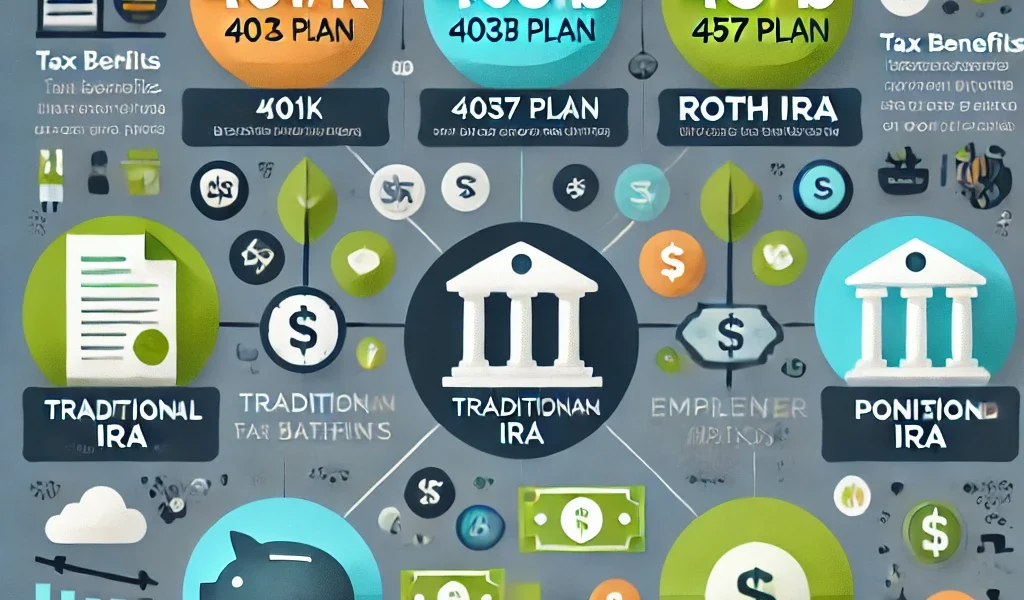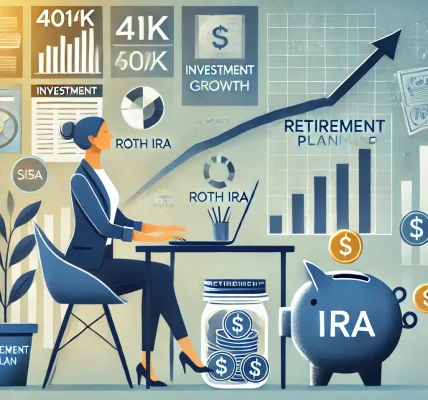Understanding the Different Types of Retirement Plans: A Beginner’s Guide – Which One Offers the Best Returns?
Planning for retirement is one of the most important financial decisions you will make in your lifetime. With numerous retirement plans available, it can be overwhelming to determine which one best suits your financial goals and offers the highest returns. Whether you’re just starting your career or nearing retirement, understanding the different types of retirement plans can help you make informed choices.
In this guide, we’ll break down the various retirement plans, their benefits and drawbacks, and how to choose the best one based on your financial situation.
What Are Retirement Plans?
Retirement plans are financial savings programs designed to help individuals accumulate wealth for their post-working years. These plans typically come with tax advantages, investment opportunities, and different withdrawal rules. They are broadly categorized into employer-sponsored plans, individual retirement accounts (IRAs), and government-backed retirement programs.
Types of Retirement Plans
1. Employer-Sponsored Retirement Plans
Many companies offer retirement benefits to employees, allowing them to save and invest through payroll deductions.
a) 401(k) Plan (For Private Sector Employees)
A 401(k) is one of the most popular employer-sponsored retirement plans. It allows employees to contribute a portion of their salary before taxes. Employers often match contributions up to a certain percentage, which provides additional benefits.
Pros:
✔ Tax-deferred growth
✔ Employer match (free money)
✔ High contribution limits
Cons:
✖ Early withdrawal penalties before age 59½
✖ Limited investment options
✖ Potential high administrative fees
b) 403(b) Plan (For Nonprofit & Public Sector Employees)
Similar to a 401(k), a 403(b) plan is available for employees of public schools, religious organizations, and nonprofits.
Pros:
✔ Tax advantages
✔ Employer matching options
✔ Lower administrative fees compared to 401(k)
Cons:
✖ Fewer investment options
✖ Early withdrawal penalties
c) 457 Plan (For Government Employees)
A 457(b) plan is a tax-advantaged savings plan offered to government employees. Unlike a 401(k), withdrawals before retirement age (if you leave your job) are not subject to penalties.
Pros:
✔ No early withdrawal penalty
✔ Tax-deferred growth
Cons:
✖ Limited availability (only for government employees)
✖ Employer match is less common
2. Individual Retirement Accounts (IRAs)
For those who don’t have access to an employer-sponsored plan or want additional retirement savings, IRAs are a great option.
a) Traditional IRA
A Traditional IRA allows individuals to contribute pre-tax income, which grows tax-deferred. You only pay taxes when you withdraw the funds during retirement.
Pros:
✔ Tax-deductible contributions
✔ Wide range of investment options
Cons:
✖ Required minimum distributions (RMDs) at age 73
✖ Early withdrawal penalties before age 59½
b) Roth IRA
A Roth IRA is funded with after-tax dollars, meaning withdrawals in retirement are tax-free. It is a great option for younger investors who expect to be in a higher tax bracket later.
Pros:
✔ Tax-free withdrawals in retirement
✔ No required minimum distributions (RMDs)
Cons:
✖ Contributions are not tax-deductible
✖ Income limits may restrict eligibility
3. Government Retirement Programs
The government provides certain retirement benefits to ensure financial security for retirees.
a) Social Security
Social Security is a federally funded program that provides retirement income based on lifetime earnings. It is a safety net but should not be relied on as the sole source of retirement income.
Pros:
✔ Guaranteed income for life
✔ Available to almost all workers
Cons:
✖ Benefits may not be enough to cover all expenses
✖ Full retirement age is increasing
b) Pension Plans (Defined Benefit Plans)
Pensions are employer-funded retirement plans that provide a fixed monthly income after retirement. They are rare in the private sector but still common in government jobs.
Pros:
✔ Guaranteed lifetime income
✔ Employer-funded
Cons:
✖ Limited flexibility
✖ Pensions are becoming less common in private jobs
Which Retirement Plan Offers the Best Returns?
The best returns depend on several factors, including tax advantages, employer contributions, investment growth, and withdrawal flexibility. Here’s a general comparison:
- Best for High Returns:
- Roth IRA (Tax-free withdrawals & investment growth)
- 401(k) with employer match (Free money + tax benefits)
- Best for Tax Advantages:
- Traditional IRA & 401(k) (Tax-deductible contributions)
- Best for Liquidity & Flexibility:
- 457 Plan (No early withdrawal penalties)
- Roth IRA (Withdraw contributions anytime, tax-free)
- Best for Guaranteed Income:
- Pension Plans & Social Security (Stable, lifelong payments)
How to Choose the Right Retirement Plan
- Check if Your Employer Offers a Retirement Plan
- If your employer offers a 401(k) or 403(b) with a match, contribute enough to get the full match—it’s free money!
- Consider Your Tax Situation
- If you expect to be in a higher tax bracket later, a Roth IRA is ideal.
- If you need tax deductions now, choose a Traditional IRA or 401(k).
- Assess Your Investment Timeframe
- Younger investors benefit more from a Roth IRA due to tax-free growth.
- Older investors may prefer a 401(k) or Traditional IRA for immediate tax savings.
- Diversify Your Retirement Savings
- Consider contributing to both an employer plan and an IRA for flexibility.
- If you’re self-employed, explore SEP IRAs or Solo 401(k)s.
Final Thoughts
Choosing the right retirement plan is a crucial step toward securing your financial future. Employer-sponsored plans like 401(k) and 403(b) provide high returns and tax advantages, while IRAs offer flexibility and tax-free growth. Government programs like Social Security and pensions provide a safety net but are not enough on their own.
The best approach is to combine multiple retirement accounts, take advantage of employer contributions, and invest wisely to maximize returns. If you’re unsure, consulting a financial advisor can help tailor a plan to your specific needs.
Regardless of where you are in your career, starting early and consistently saving is the key to a comfortable retirement.
Disclaimer: This article is for informational purposes only and does not constitute financial or legal advice. Always consult with a certified financial professional before making investment decisions.




